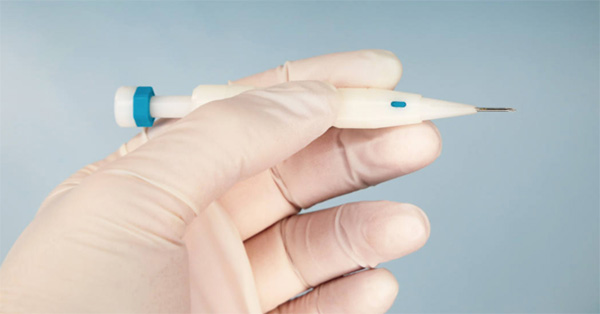What is a DHI hair transplant

A recently developed hair restoration procedure that has gained popularity throughout the world is Direct Hair Implantation also known as DHI. In this article we will break down the specifics of DHI hair transplant, including how they work, benefits, procedure, post-transplant care, and how it compares to other hair restoration procedures.
Understanding DHI Hair Transplant
Direct Hair Implantation (DHI) is a modern hair transplantation technique which delivers donor hair by directly extracting hair follicles from the donor area of the scalp and implanting them directly to the bald area. DHI extracts each hair 1 by 1 through the Choi Implanter Pen which provides a more controlled implantation and results in more natural hair growth and distribution.
How DHI Works
DHI hair transplants make use of a customized instrument called a Choi Implanter Pen that enables extraction and immediate implantation of hair follicles. This removes the need for a separate procedure known as recipient site preparation where trauma is inflicted on a balding or thinning area of the scalp (which typically comes before the implant itself in other hair transplantation approaches). The Implanter Pen is used to extract one or more hair follicles from the donor area (classically the back or sides of the head) before being placing them in the balding or thinning regions of the scalp.
Key Features of DHI
Without Preparing Recipient Sites: For traditional hair transplant methods, in order to implant follicles, first the recipient sites must be ‘prepared’. But when it comes to the DHI procedure, no such preparation is required.
Improved Follicular Survival: Since the DHI technique dramatically minimizes the time that the follicles are outside of the scalp, it increases the chances of them surviving and reduces the number of grafts needed for the procedure.
Natural Hairline: By precisely controlling the angle, depth and direction of single hair follicles, DHI allows surgeons to create a more natural and aesthetically pleasing hairline.
Less invasive: The DHI method is less invasive and results in less trauma to the scalp and a shorter recovery time than older techniques.
Benefits of DHI Hair Transplants
1. Minimal Scarring
Another important benefit of the DHI is the minimal scarring, thanks to the Choi Implanter Pen used that creates tiny incisions which heal fast and leave almost no scars.
2. Quick Recovery
Patients have a quicker recovery period than with the traditional methods, and most people are back at work within days.
3. High Precision
Because it’s so precise, the DHI technique can create a more natural look. With this method, individual hairs are placed by the surgeon with precision, on a one-by-one basis, blending in among the existing hair.
4. Enhanced Follicle Survival Rate
Using DHI’s technique of direct implantation means that follicles spent less time out of the body, therefore increasing their chances of survival and the likelihood of healthy hair growth.
5. Customizable Results
DHI offers customization in the hair restoration procedure, which allows the surgeon to adjust the surgical plan, number of grafts needed, graft preparation and implantation technique, density, angle of insertion and direction, to fit exactly with the desires and needs of any patient.
The DHI Hair Transplant Procedure
Step-by-Step Process
Consultation: The process begins with an evaluation and blood test
Preparation: Once the decision is made by the patient to move forward the donor area is prepared using local anesthesia to ensure comfort.
Follicle Extraction : Choi Implanter Pen is used to extract the hair follicles from the donor area.
Direct Implantation: after being harvested, follicles are implanted right away using the same pen. The surgeon implants the follicles, making sure to place them in the right angle and depth so they sit naturally.
Post-Procedure Care: Patient education on post-operative care will ensure correct treatment and healthy hair growth.
Duration of the Procedure
There is no precise duration for the DHI hair transplant. It varies according to the number of grafts.
Aftercare for DHI Hair Transplants
Proper aftercare is important for the best results for a DHI hair transplant
Some principles to follow:
Do not touch the scalp: Patients should avoid touching or rubbing or scratching the area where the follicles have been planted in order to avoid dislodging them.
Following Washing Instructions: Surgeons recommend washing gently for the first few days following surgery. Use a mild shampoo, but do not scrub.
Limit Activity: Avoid strenuous activity and exercise for at least a week after your procedure to prevent sweating and possible complications. Also, avoid direct sunlight to the scalp
Medication: Any prescribed medications, such as an antibiotic or anti-inflammatory drug, must be taken as prescribed so that it can contribute to healing the injured area.
DHI and Other Hair Restoration Techniques
To understand the benefits of DHI, it helps to compare the technique with other the popular hair restoration procedures, Follicular Unit Extraction (FUE) and Follicular Unit Transplantation (FUT).
DHI vs. FUE
In terms of technical aspects, both DHI and FUE involve extracting single follicles from the donor area. But DHI implements each hair immediately one by one using the Choi Implanter Pen. FUE also places hair follicles one by one but requires the preparation of the recipient sites before placing follicles.
Scarring: DHI causes minimal scarring because the incisions are tiny, whereas FUE causes small circular scaring at the recipient site.
Recovery Time: DHI provides a faster recovery than FUE, so patients can return to their normal activities quicker following the procedure.
DHI vs. FUT
FUT is technique-heavy: a strip of skin is removed from the donor area, then dissected into the follicular units of hair. FUT typically leaves a linear scar, whereas DHI leaves minimal scarring.
Recovery Time: DHI has quicker recovery than FUT as the latter involves an extensive healing process of the surgical incision.
FUT uses one specific donor strip area, but with DHI follicles are extracted from all over the scalp.
Potential Risks and Side Effects
DHI hair transplants are safe and effective, but they are a medical operation and, as such, do come with health risks and side effects, such as:
Infection: Although rare, infections can occur at the extraction or implantation sites.
Swelling and bruising: You may find there is some swelling or bruising in the area treated, which will usually go down within a couple of days.
Shock Loss: Some patients may be shocked at the loss of hair following the procedure. Shock loss is temporary.
Poor Outgrowth: Sometimes follicles may not ‘take’, and the results are less than optimal.
Who is a Good Candidate for DHI?
DHI hair transplants are suitable for a variety of individuals, including:
Androgenetic Alopecia in Men and Women: This is the genetic cause of hair loss in the vast majority of patients, both men and women.
Natural Results Seekers: For men who wish to have a natural hairline with specific placement of follicles, DHI could be the right option.
Individuals with Limited Donor Hair: DHI works best for those with limited donor hair, as it makes efficient use of available follicles.
Factors to Consider
Before deciding on a DHI hair transplant, potential candidates should consider the following factors:
Area of Hair Loss: A professional opinion about the area of hair loss will help to evaluate if DHI is suitable for the patient or not.
Good health: You should be in good health and without any underlying medical conditions, as these might unfavorably affect the results of the hair restoration process.
Realistic expectations: A prospective candidate must have a realistic expectation about the result, understanding that the process of the hair restoration itself is a gradual process.
Direct Hair Implantation (DHI) is a modern minimally invasion hair restoration procedure that gives many patients the ability to address their hair loss with significant benefits over older methods. The procedure is minimally invasive, highly accurate and requires a very quick recovery time.





